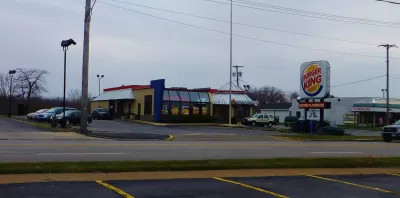Public health analysts and justice activists are tackling food deserts in a state known for its agricultural output. Low-income neighborhoods of color are the hardest hit by a lack of grocery options.

Bobbi Murray profiles the food deserts of Los Angeles: neighborhoods where the nearest large grocery store lies more than a mile away. Food inequality, and associated health problems like obesity and diabetes, follows in the path of poverty. From the article: "Stores with the $15 cold-pressed juices (with a shot of turmeric) get Yelped. Less so are those stores in neighborhoods where the lettuce, if any, is wilted and unappetizing, and the 99-cent Flamin' Hot Cheetos are close to the register."
Analysts from public health organizations like Community Health Councils (CHC) see a perfect storm in California's food deserts: cheap, unhealthy options close to home and expensive, healthy choices far away. Obesity becomes rampant: residents look well-fed, but they are really malnourished.
In the face of this problem, which affects neighborhoods like South L.A., Historic Filipino Town, Boyle Heights, and Southeast L.A., "CHC and allies are pursuing a number of community-based approaches to re-organizing L.A.'s food system, including more inner-city farmers markets and a strategy to bring more supermarkets into South L.A. They have fought to set limits on the number of fast-food restaurants in South L.A."
FULL STORY: Finding Nutrition in the Food Deserts of California

Pennsylvania Mall Conversion Bill Passes House
If passed, the bill would promote the adaptive reuse of defunct commercial buildings.

Planning for Accessibility: Proximity is More Important than Mobility
Accessibility-based planning minimizes the distance that people must travel to reach desired services and activities. Measured this way, increased density can provide more total benefits than increased speeds.

World's Largest Wildlife Overpass In the Works in Los Angeles County
Caltrans will soon close half of the 101 Freeway in order to continue construction of the Wallis Annenberg Wildlife Crossing near Agoura Hills in Los Angeles County.

Eviction Looms for Low-Income Tenants as Rent Debt Rises
Nonprofit housing operators across the country face almost $10 billion in rent debt.

Brightline West Breaks Ground
The high-speed rail line will link Las Vegas and the Los Angeles area.

Colorado Bans No-Fault Evictions
In most cases, landlords must provide a just cause for evicting tenants.
City of Costa Mesa
Licking County
Barrett Planning Group LLC
HUD's Office of Policy Development and Research
Mpact Transit + Community
HUD's Office of Policy Development and Research
Tufts University, Department of Urban and Environmental Policy & Planning
City of Universal City TX
ULI Northwest Arkansas
Urban Design for Planners 1: Software Tools
This six-course series explores essential urban design concepts using open source software and equips planners with the tools they need to participate fully in the urban design process.
Planning for Universal Design
Learn the tools for implementing Universal Design in planning regulations.























